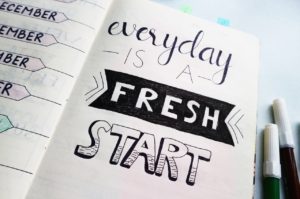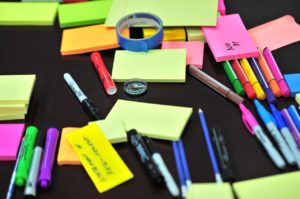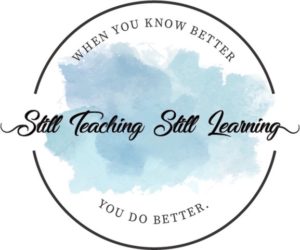Happy New Year! Winter break is nearly over and I’m already thinking about going back to school. It’s a great time to reset the classroom environment, behavior expectations, and winter self-care.

I focus on the classroom environment first. We’ll get to the other stuff in a later post!
Believe it or not, the beginning of January up until spring break is usually the best teaching time of the year. Most students are ready to come back to school after winter break and eager to get back into a routine. It’s a great time to “reset” your classroom and one way to do that is to think about the environment and how you might change things up in the room itself and how you might change your own plans and mindset.
Another thing to keep in mind — you are at the halfway point of your school year! Whether it has been a great year so far or a tough year so far, you are halfway through. Let’s make the rest of the year the best we possibly can!



Here are 10 tips to start doing that.
1 – If you set any teaching goals for yourself at the beginning of the year, it’s a good time to review those goals. How are you doing?
Are there things that you have accomplished or made a natural part of your routine? Cross them off the list and congratulate yourself!
Are there things that you have completely forgotten about, but aren’t all that important? If so, cross them off the list too — they don’t matter.
What about the rest of the tasks? First, re-evaluate whether they really matter at this point in time. If they do, can you break them down into smaller, more bite-sized tasks so that you can easily incorporate them into your routine? Are there any one-time things you can do and then they’ll be done? Figure out how to add them to your to-do list for the month.



2 – Speaking of to-do lists: take a look at your January calendar and make a to-do list for the month. What will need to be done this month? (Report cards come to mind — ugh.) What meetings are coming up? Is there any meeting that you need to prepare for? What will need to be graded?



3 – I find it helpful to go into my classroom for a couple of hours over the break and do some reflecting and goal setting there. Somehow, when I’m in the place where the stuff happens, it helps me think about what changes I want to make, what I can do to make something easier or more efficient, and how I might want to change some things. Two questions that I ask myself are: What’s not working here? and What stresses me out when I look at this?



4 – Think about what you would like to do better or differently for the next part of the year. You might think about this in terms of the next quarter OR for the rest of the year.
I do this by making a giant brainstorming list. Here’s a page from my notebook:



When I have listed every single thing I can think of, I go back and categorize the list. Possible categories: subject area, organization, routine, decor.
Here’s mine (O = organization, R = routine, M = math, Rdng = reading):



In each category, I then prioritize how “urgent” this change is. If it’s something that really needs to be done right away, I prioritize with an A. Something that needs to be done within a month gets a B. Something I would like to get done within 90 days (or longer) gets a C.



Then, within the prioritized lists, I identify if this is something that can be done quickly (with an asterisk) or something that needs more time or thought (with a star). If it’s something quick, I add it to my monthly or weekly to-do list. If it’s something that needs more time or thought, I schedule a time to focus on that.



As I do the categorizing and scheduling, I also reserve the right to eliminate something from the list. If it’s not that big of a deal or if I just don’t have time to focus on that right now, I take it off the list!
5 – I know I’ve been going on and on about all the things to change. But it’s also important to think about what is working well for you and for your class. Is it your morning routine? Are you implementing restorative practices circles? Implementing #classroombookaday or just doing more reading aloud in general? Whatever is working well, write it down and keep doing it! When they return, you might even ask your students to share what they think is going well in your class.
All of this planning and reflecting are part of being a lifelong learner. As much as possible, share this practice with your students. It’s a great way to model your own thinking and learning and a great reflection option for them to do at the beginning of a new year too! Encourage your students (and yourself) to try something new, give up what is not working for you, and keep an open mind to learn from others.



6 – Consider using some sort of midyear reflection questionnaire for your students. I like the “How’s it Going?” form from Cult of Pedagogy.



7 – It’s also a good time to change up your seating arrangement or your classroom furniture arrangement. While I try to change my seating chart at the start of each month, I make sure to do that when we come back from winter break in January.



8 – Declutter and clean up your classroom. And when I say “declutter’, I mean throw stuff away. If it’s “dead” (markers, ratty books, broken pencils), toss it. Do you have stacks of papers that are extra copies or that don’t need to be graded? Recycle them. According to the website Psychology Today, getting rid of clutter increases your sense of confidence and self-efficacy, it energizes you, and it reduces anxiety.



9 – As you declutter, make a list of the things you would like to stock up on when you have the money to do so or when the items are on sale! Here’s an example: post-it chart pads, Expo dry erase markers, a heavy-duty pencil sharpener, Flair pens, lots of pencils, chart markers.
10 – Think about read-aloud books you will share with your students. Here are some favorites for Black History Month, which I start reading aloud in January:
My Brother Martin: A Sister Remembers Growing Up with the Rev. Dr. Martin Luther King by Christine King Farris
Martin’s Big Words: The Life of Dr. Martin Luther King, Jr. by Doreen Rappaport
Freedom on the Menu by Carole Boston Weatherford
Henry’s Freedom Box by Ellen Levine
Freedom Ship by Doreen Rappaport
The Story of Ruby Bridges by Robert Coles
Through My Eyes by Ruby Bridges
28 Days: Moments in Black History That Changed the World by Charles R. Smith, Jr.
Wilma Unlimited: How Wilma Rudolph Became the World’s Fastest Woman by Kathleen Krull
From Slave Ship to Freedom Road by Julius Lester
Our Children Can Soar: A Celebration of Rosa, Barack, and the Pioneers of Change by Michelle Cook
Pink and Say by Patricia Polacco
Dear Benjamin Banneker by Andrea Davis Pinckney
Schomburg: The Man Who Built a Library by Carole Boston Weatherford
Two Friends: Susan B. Anthony & Frederick Douglass by Dean Robbins
Little Leaders: Bold Women in Black History by Vashti Harrison
Little Legends: Bold Men in Black History by Vashti Harrison
A Child’s Introduction to African-American History: The Experiences, People, & Events That Shaped Our History by Jabari Asim
Bedtime Inspirational Stories: 50 Amazing Black People Who Changed the World by L. A. Amber
Young, Gifted & Black: Meet 52 Black Heroes from Past & Present by Jamia Wilson
Black Women in Science: A Black History Book for Kids by Kimberly Brown Pellum
100 African-Americans Who Shaped American History by Chrisanne Beckner
Have You Thanked an Inventor Today? by Patrice McLaurin
Not strictly black history books, but these books have awesome stories to share with kids:
Shaking Things Up: 14 Young Women Who Changed the World by Susan Hood
She Persisted: 13 American Women Who Changed the World by Chelsea Clinton
First Generation: 36 Trailblazing Immigrants & Refugees Who Make America Great by Sandra Neil Wallace
Enough! 20 Protesters Who Changed America by Emily Easton
Watch for my next post about a January reset for classroom management and behavioral expectations!
Do you want more guidance with resetting your classroom? I’m creating a mini-course with more step-by-step tips. Sign up for the waiting list HERE and I will notify you when it’s ready! (Signing up does not obligate you in any way.)
